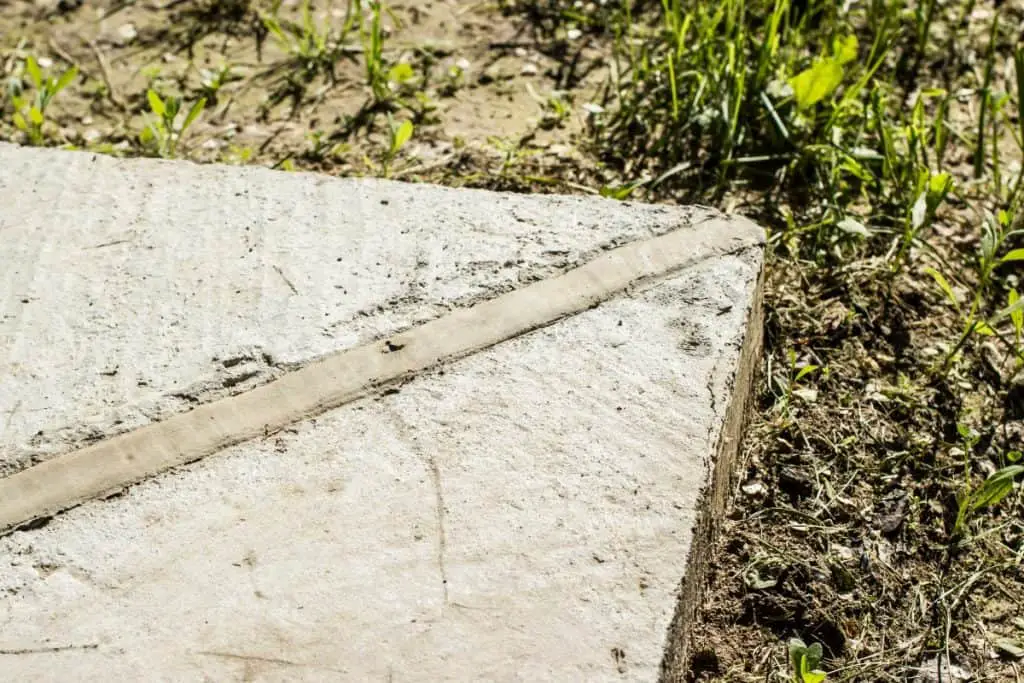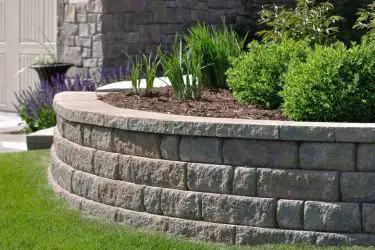Concrete does not contain an element of elasticity, and damage will follow the expansion and contraction of concrete as temperature and weather changes which is the reason expansion joints are necessary.
Expansion joints are flexible material that runs along a joint or gap in slabs and other concrete structures. An expansion joint assembly is designed to absorb the expansion and shrinkage of the concrete, that naturally occurs due to change in temperatures.
Understanding the need for expansion (or control) joints is necessary to install them correctly. Controlling the cracks is important, as well as knowing the kind of expansion joint to use in your specific situation.

Table of Contents
Do I Need Them?
The purpose of having an expansion joint in concrete is to aid in the appearance and longevity of a structure. By placing these joints, there is a designated place for the movement of the concrete to occur. It is placed to prevent random cracks which will happen because of the warming and cooling of the environment. Placing these joints improves the life of concrete, and reduces the stress it may cause on the structures or other slabs it touches.
Characteristics
Simply put, the most important characteristic of your expansion joint is to aid in the expansion of the surrounding cement. It does this in a variety of ways, including helping to buffer movement with changes in temperature, as well as absorbing vibrations from being walked on or the use of vehicles and large tools nearby. It also helps to keep your concrete strong while the soil around it settles, or the movement of the earth changes. These joints are readily apparent everywhere. You can see them in the gaps of sidewalk or road and sometimes even feel them when riding in a vehcile or on a bicycle.
Types
There are many types of expansion joints that are used to aid in the construction of many structures including roadways used for transportation
- Bridge Expansion Joint – “are designed to allow for continuous traffic between structures while accommodating movement, shrinkage, and temperature variations” on the concrete and steel. Source.
- Masonry Expansion Joints – used in laying bricks. Using a joint rather than a mortar occasionally is able to help with the movement of bricks and sealing.
- Railway Expansion Joints – used when a railway crosses a ravine, road, or body of water.
- Pipe Expansion Joints – used in systems that aid in the movement of high-temperature substances like steam or exhaust gases.
While these different types are important, they can be used in different situations. When laying a concrete sidewalk, or other structure there are also other types of expansions joints made from a variety of materials.
- Metal – can take increased heating and pressure
- Asphalt – waterproof, self-sealing
- Fiber – non-extruding, flexible
- Cork – self-expanding if shrinkage is a problem
- Sponge/ Rubber – absorb greater movements, and spring back
Installation
When beginning to install your expansion joints, it’s important to know the depth of your joints, as well as the spacing between them. Generally speaking, if the concrete is 3 inches thick, you can multiple that by 2 or 3 and say that every 6 to 9 feet there should be a joint placed to prevent cracking.
Pre-Concrete Installation Tips
To prepare for the installation of your concrete slab, ready-made joints are needed. Cut them to be the same height as the thickness of your concrete. As you pour each stab of concrete, stop in between to place the joint at the edge before beginning to pour the next slab. A joint trowel tool can be used to ensure there is a space between each slab.
Post-Concrete Installation Tips
If done sufficiently while pouring the concrete, not much instruction is needed after the concrete has hardened. There may be times additional joints are needed. A concrete saw can be used to make a groove in the concrete to allow more expansion or shrinkage. Make sure to have your lines drawn before you begin cutting.
Repair
Expansion joints continue to work best if they are inspected yearly, but knowing the correct way to repair them can be helpful.
Sealing a joint with a concrete repair material called caulk can help to reduce water damage, make it easier to remove snow or dirt from your concrete, and aid in the presentation of future cracks. Caulk lasts from 7 to 10 years, making it an effective option.
Related article: Should Concrete Control Joints Be Caulked?
First, clean out the joint as much as possible, and fill the crack with a foam backer rod. Then fill it in with the caulk as well as other small cracks.
A Few Helpful Tips
- Never cover your joints or caulk with epoxy or another coating, unless a contractor is able to give a special epoxy.
- Joints cut afterward with a saw should be done 4 to 12 hours after the concrete has been laid.
- Plan the exact location of all joints before you begin to ensure all slabs are the same size.
- Always look for materials that will bond and stick together well with concrete, so that your joints do not lead to open crevices.
- If your concrete is going to bear a heavy load, metal dowels would be a good option.
Overall, the expansion points of your concrete are crucial, but can easily be accomplished as you follow the helpful tips and videos shown here, as well as seeking the advice of an experienced professional.




